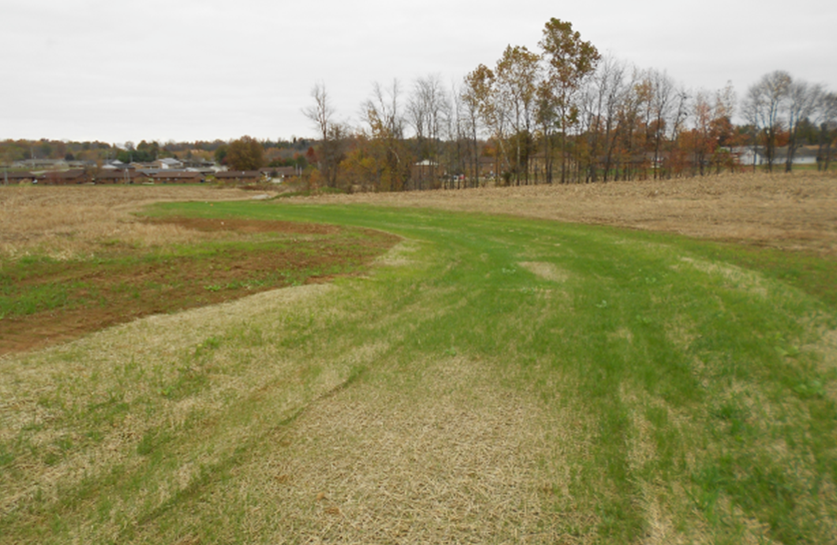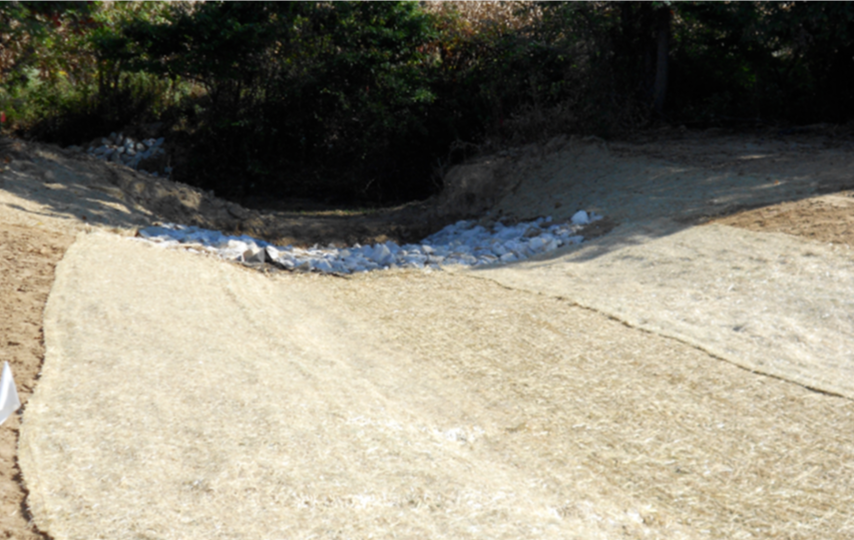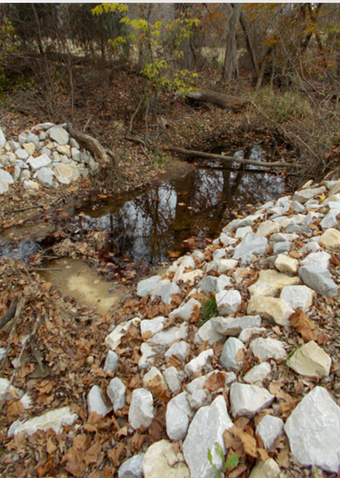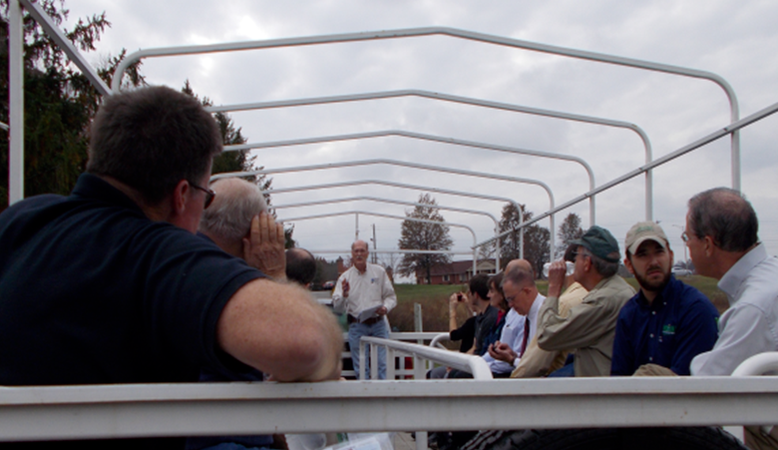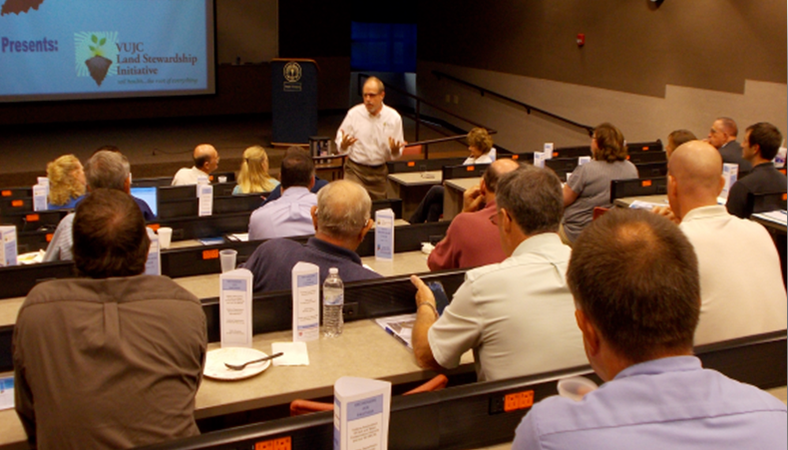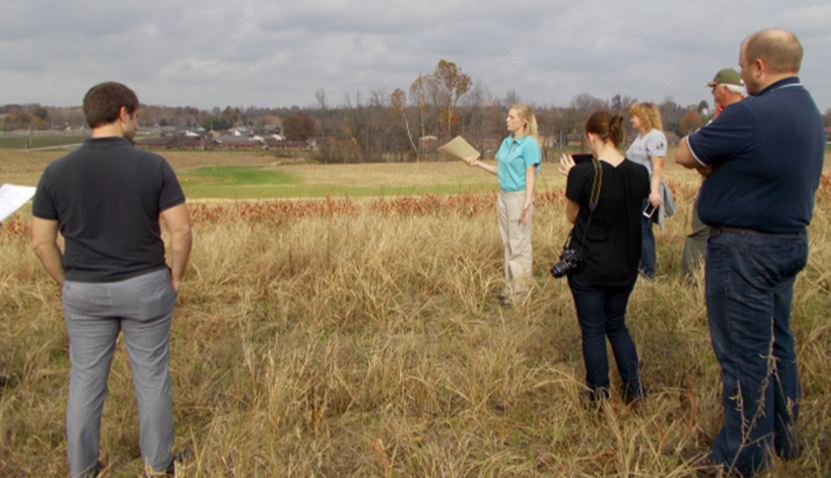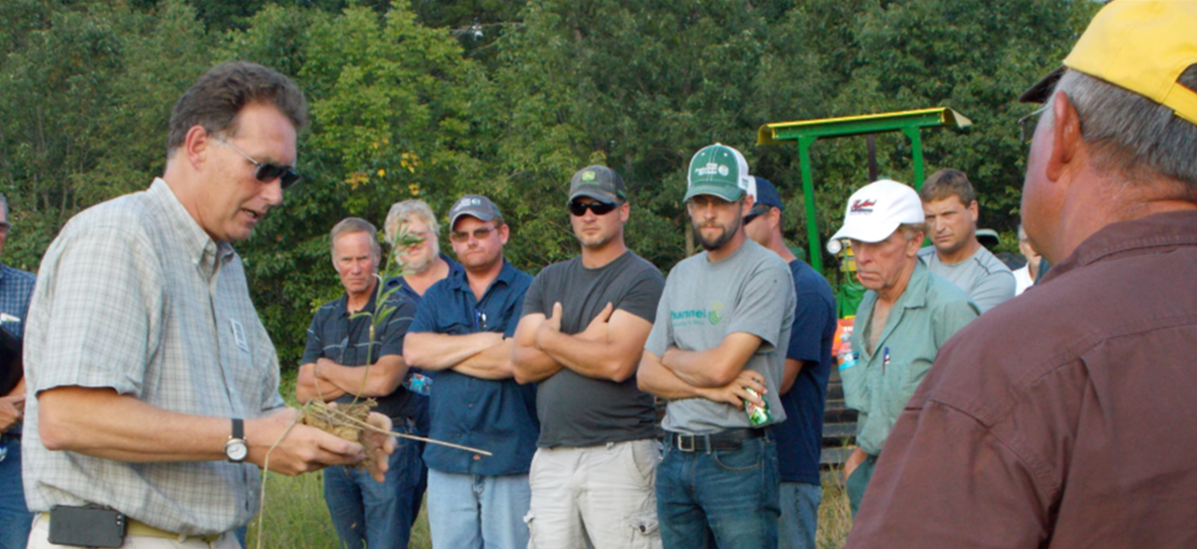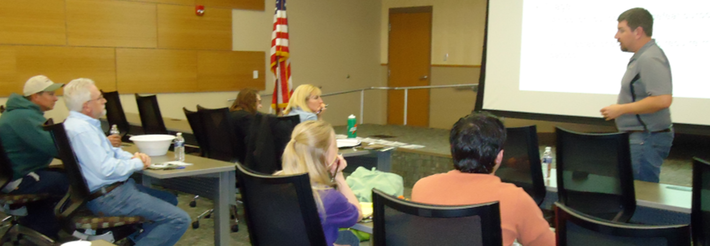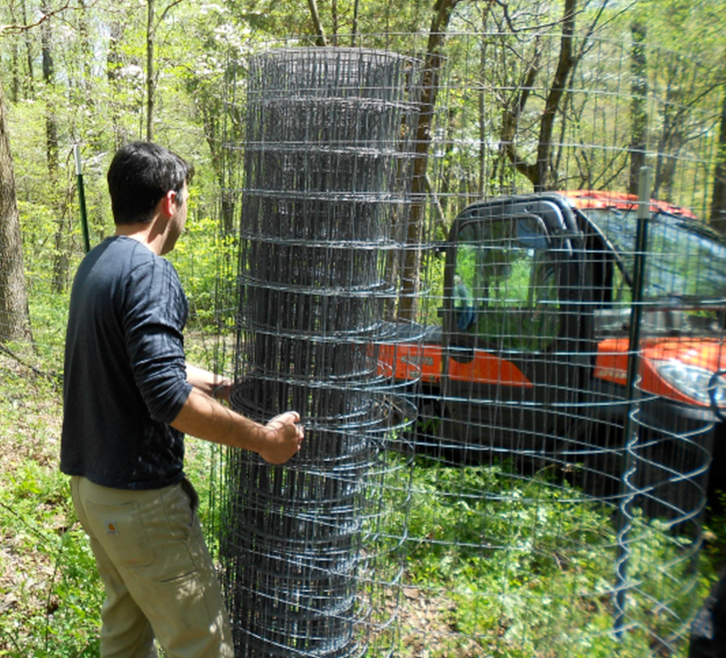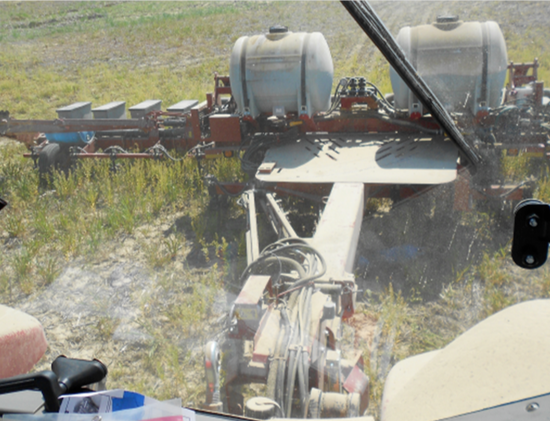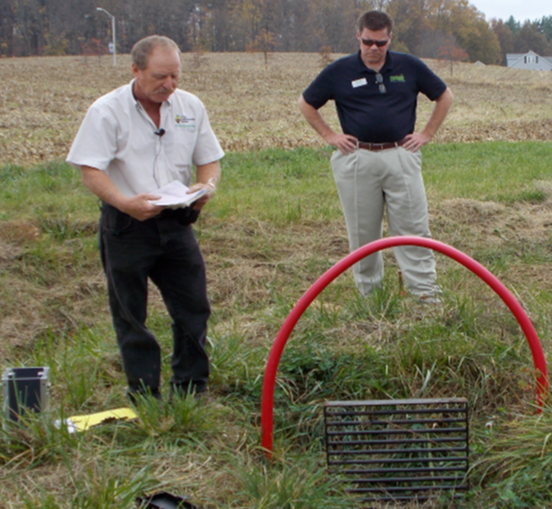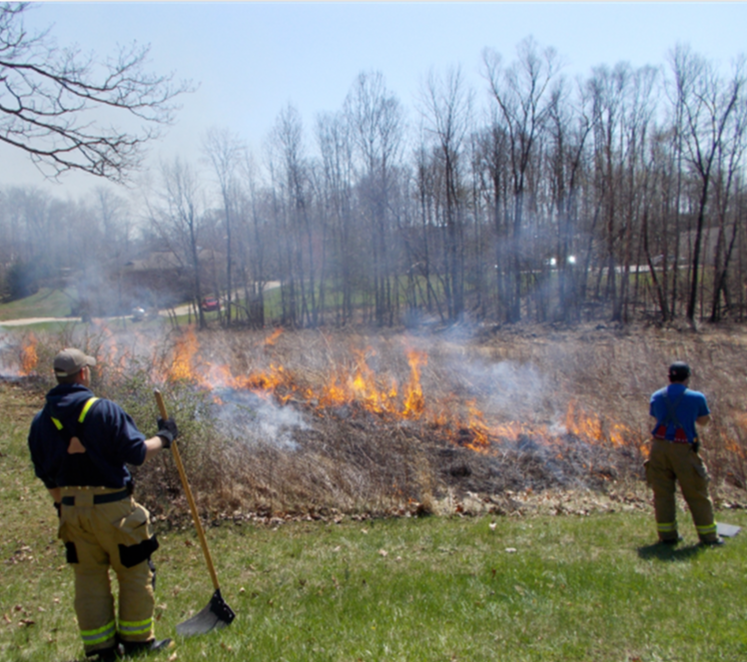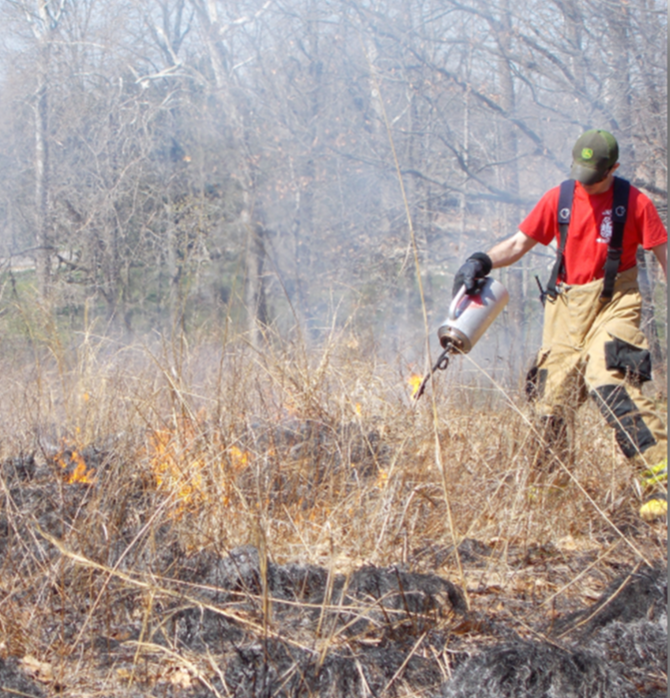| 2015 Annual Report | |
| File Size: | 4842 kb |
| File Type: | |
Improvements in Natural Resources & More Public Access for Everyone
The LSI continued its efforts in fighting erosion with the completion of a new grassed waterway in Field #7 to address a gully erosion problem.
Restoration and repairs in the natural lateral ditch were completed. This was essential to stop ditch bank erosion, and to eliminate the deep undercut pocket in the ditch bottom. This stabilization of the ditch will eliminate erosion and improve water quality, and assure that the university sewer line does not fracture and cause spillage into this waterway.
Restoration and repairs in the natural lateral ditch were completed. This was essential to stop ditch bank erosion, and to eliminate the deep undercut pocket in the ditch bottom. This stabilization of the ditch will eliminate erosion and improve water quality, and assure that the university sewer line does not fracture and cause spillage into this waterway.
In November, the Dubois County SWCD hosted a Showcase Tour on the VUJC Campus. This was in preparation for the Indiana SWCD Showcase Award to be presented to the Dubois County SWCD and VUJC officials in January, 2016 at the Indiana SWCD Annual Conference.
The Indiana Showcase Award is sponsored by the Indiana Conservation Partnership (ICP). The ICP includes the Indiana Association of SWCDs, IDEM, IDNR, Indiana State Department of Agriculture’s Division of Soil and Conservation, Purdue Cooperative Extension Service, State Soil Conservation Board, USDA Farm Service, and the USDA NRCS.
The November tour took place on the Vincennes University Jasper Campus to showcase the partnership between SWCD and VUJC creating the VUJC Land Stewardship Thirty five attendees learned more about the LSI. The tour featured innovative conservation practices; including the rain garden, newly installed waterway, field borders, cover crops, lateral creek modification, and drainage water management systems. SWCD and ICP staff members explained the practices to tour attendees.
The VUJC Land Stewardship Initiative is concluding its fourth year. Much work has been done to establish the LSI as a viable and credible project. With this foundation, the Initiative looks forward to increasing its value as a demonstration and education site to advance the adoption of soil conservation, nutrient management, and soil health practices.
The Indiana Showcase Award is sponsored by the Indiana Conservation Partnership (ICP). The ICP includes the Indiana Association of SWCDs, IDEM, IDNR, Indiana State Department of Agriculture’s Division of Soil and Conservation, Purdue Cooperative Extension Service, State Soil Conservation Board, USDA Farm Service, and the USDA NRCS.
The November tour took place on the Vincennes University Jasper Campus to showcase the partnership between SWCD and VUJC creating the VUJC Land Stewardship Thirty five attendees learned more about the LSI. The tour featured innovative conservation practices; including the rain garden, newly installed waterway, field borders, cover crops, lateral creek modification, and drainage water management systems. SWCD and ICP staff members explained the practices to tour attendees.
The VUJC Land Stewardship Initiative is concluding its fourth year. Much work has been done to establish the LSI as a viable and credible project. With this foundation, the Initiative looks forward to increasing its value as a demonstration and education site to advance the adoption of soil conservation, nutrient management, and soil health practices.
Education & Demonstration Activities
The LSI and SWCD sponsored two events on the Vincennes University Campus in 2015. The first was a workshop in March focusing on herbicide resistance in weeds. Travis Legleiter, Weed Science Program Specialist from Purdue University, discussed herbicide use for cover crop termination, as well as the control of weeds such as marestail and palmer amaranth.
The September Field Day included indoor and outdoor presentations, as well as LSI sponsors’ opportunity to set up informational displays. This event was attended by in excess of 40 people. The program focused on three topics. Dr. Christian Krupke, from Purdue University discussed the results of research regarding neonicitoid seed coatings. Most seed sold and utilized by farmers is coated. Krupke’s data shows there is limited benefit in using coated seeds due to the timing of the release of the chemicals. Hans Schmitz, Purdue Extension Educator and Dr. Hans Kok, Agronomist, discussed methods to make farmland more resilient to our weather extremes. More frequent intense rain events cause erosion and nutrient loss that wastes money and pollutes streams. They discussed the benefits of practices such as cover crops that fight erosion in wet years, and adding organic matter to the soil that holds water in drought years. Matt Pearson from the Office of the State Chemist presented a summary of updated regulations to store, transport and apply fertilizer and manure.
The September Field Day included indoor and outdoor presentations, as well as LSI sponsors’ opportunity to set up informational displays. This event was attended by in excess of 40 people. The program focused on three topics. Dr. Christian Krupke, from Purdue University discussed the results of research regarding neonicitoid seed coatings. Most seed sold and utilized by farmers is coated. Krupke’s data shows there is limited benefit in using coated seeds due to the timing of the release of the chemicals. Hans Schmitz, Purdue Extension Educator and Dr. Hans Kok, Agronomist, discussed methods to make farmland more resilient to our weather extremes. More frequent intense rain events cause erosion and nutrient loss that wastes money and pollutes streams. They discussed the benefits of practices such as cover crops that fight erosion in wet years, and adding organic matter to the soil that holds water in drought years. Matt Pearson from the Office of the State Chemist presented a summary of updated regulations to store, transport and apply fertilizer and manure.
|
Two deer “exclosures” were also installed in April of this year. Their purpose is to compare the effects of deer browse on the forest growth compared with this area which excludes deer. The goal is to demonstrate the resiliency of the native species against invasive species when deer are not a factor. These exclosures are visible from the interpretive Woodland Walking Trail.
|
A part of Field #7 was disturbed during the construction of the Center for Technology, Innovation, and Manufacturing. There is little topsoil to produce a successful cash crop. The LSI Steering Committee decided to leave it fallow in 2015. To rebuild the soil, it was sown to cover crops during the summer of 2015. Despite poor seed germination and slow growth during the year, the cover crop roots are breaking through the very hard compacted layers of the soil. The goal for this area is to restore topsoil, build organic matter, protect it from erosion and once again make it productive for cash crop production. This fall, some cover crops were drilled in as a reinforcement cover crop. Erosion control issues will continue to be addressed in this area.
Program Activities
|
Since 2013, water samples from the tile discharge outlets are collected to determine progress in erosion control (clarity), and nitrate and phosphate control. The initial focus is collecting water from Field #2 to determine the quality of the surface water coming onto the field from the northern residential subdivisions, and also the water that drains from the field into the Water and Sediment Control Basins (WASCoBs).
Collecting samples from subsurface drainage tile in Field #2 determines what was actually released into the Jahn Creek tile outlet. Ag Leader software is utilized to analyze the impacts of nutrient application into the field. The software tracks detailed cropping results gathered from the yield monitor as the result of the LSI’s use of variable rate nutrient application. Soil tests were pulled on a three acre grid in fall of 2014. The Initiative’s Ag Committee used the results of these tests to develop a variable rate nutrient management plan in 2015. Rather than applying fertilizer at the same rate over the entire farm, nutrients are applied as needed and not applied where they are less likely to be utilized by crops. Applying fertilizer this way is not only more economically efficient, it also has the environmental benefit of potentially reducing the amount of fertilizer that leaves the field. Monitoring of subsurface drainage and the water retained in the Agri-Drain gated tile system in Field #1 continued in 2015. Although it is too soon to draw any conclusions, monitoring of the water quality will continue to determine if the cash crops or cover crops utilize the nutrients trapped in the water retained by the gate system. Managing the water level in this low, wet area has improved the yield of the crop harvested in the fall. |
The VUJC Land Stewardship Initiative uses the crop land, forest, prairies, and surrounding green space of the campus to demonstrate and promote sustainable land management.
In April, a controlled burn for prairie maintenance was started in two areas near the south entrance of the campus. A healthy prairie requires an occasional disturbance and fire is a tool for providing it. Burning removes accumulated dead plant material called thatch to help restore a balance between grasses and flowering plants. Native plants in this area grow during the summer months, so when the fire burns away the dead thatch, it leaves the prairies living roots intact.
The control burn was planned on a day with favorable wind conditions. Adam Dumond, Indiana Department of Natural Resources District Forester, lead the controlled burn while being assisted by the Jasper Volunteer Fire Department. Dumond has his Red Card, a national wildland firefighting authorization.
After several weeks, the planting of native wildflowers and forbes was implemented to encourage pollinators. Enhancing wildlife habitat is one aspect of the multi-faceted LSI project. Prairies like this one are an important dwindling source of habitat for plants and wildlife. However, even landowners with limited space and resources can help reestablish habitat. Small areas can allow insects, birds, and small mammals to ‘leap frog’ between larger natural areas.
In April, a controlled burn for prairie maintenance was started in two areas near the south entrance of the campus. A healthy prairie requires an occasional disturbance and fire is a tool for providing it. Burning removes accumulated dead plant material called thatch to help restore a balance between grasses and flowering plants. Native plants in this area grow during the summer months, so when the fire burns away the dead thatch, it leaves the prairies living roots intact.
The control burn was planned on a day with favorable wind conditions. Adam Dumond, Indiana Department of Natural Resources District Forester, lead the controlled burn while being assisted by the Jasper Volunteer Fire Department. Dumond has his Red Card, a national wildland firefighting authorization.
After several weeks, the planting of native wildflowers and forbes was implemented to encourage pollinators. Enhancing wildlife habitat is one aspect of the multi-faceted LSI project. Prairies like this one are an important dwindling source of habitat for plants and wildlife. However, even landowners with limited space and resources can help reestablish habitat. Small areas can allow insects, birds, and small mammals to ‘leap frog’ between larger natural areas.
If you would like a chance to tour the LSI property to see these changes in person or have questions about adopting cover crops please call Melissa Ruschau to arrange a visit (812) 482-1171 ext. 3. The district has purchased a soil health testing kit and is willing to come to your farm for a site visit and evaluation of your soils’ health because after all - Soil health is the root of everything!
